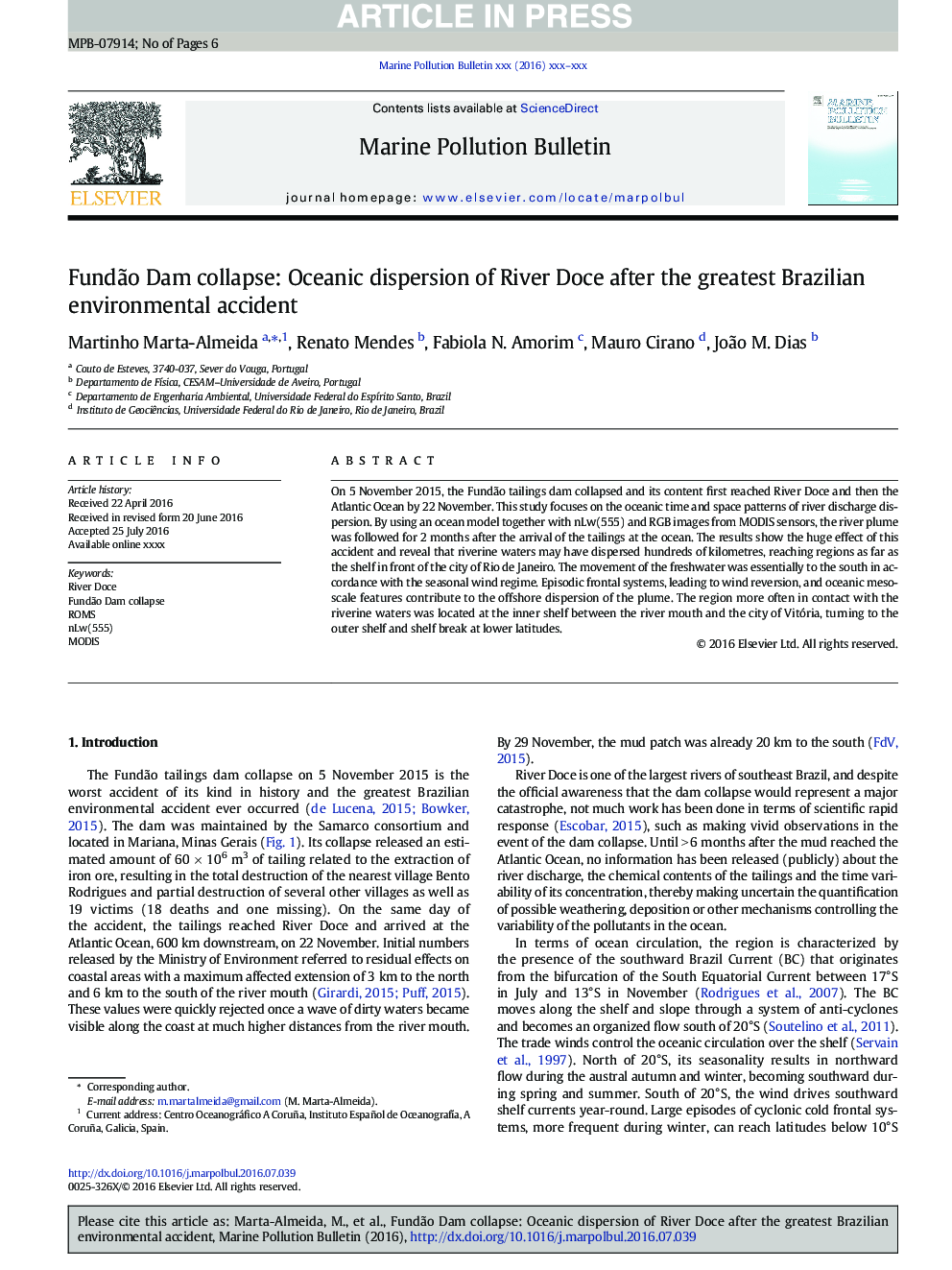| Article ID | Journal | Published Year | Pages | File Type |
|---|---|---|---|---|
| 5758022 | Marine Pollution Bulletin | 2016 | 6 Pages |
Abstract
On 5 November 2015, the Fundão tailings dam collapsed and its content first reached River Doce and then the Atlantic Ocean by 22 November. This study focuses on the oceanic time and space patterns of river discharge dispersion. By using an ocean model together with nLw(555) and RGB images from MODIS sensors, the river plume was followed for 2 months after the arrival of the tailings at the ocean. The results show the huge effect of this accident and reveal that riverine waters may have dispersed hundreds of kilometres, reaching regions as far as the shelf in front of the city of Rio de Janeiro. The movement of the freshwater was essentially to the south in accordance with the seasonal wind regime. Episodic frontal systems, leading to wind reversion, and oceanic mesoscale features contribute to the offshore dispersion of the plume. The region more often in contact with the riverine waters was located at the inner shelf between the river mouth and the city of Vitória, turning to the outer shelf and shelf break at lower latitudes.
Related Topics
Physical Sciences and Engineering
Earth and Planetary Sciences
Oceanography
Authors
Martinho Marta-Almeida, Renato Mendes, Fabiola N. Amorim, Mauro Cirano, João M. Dias,
